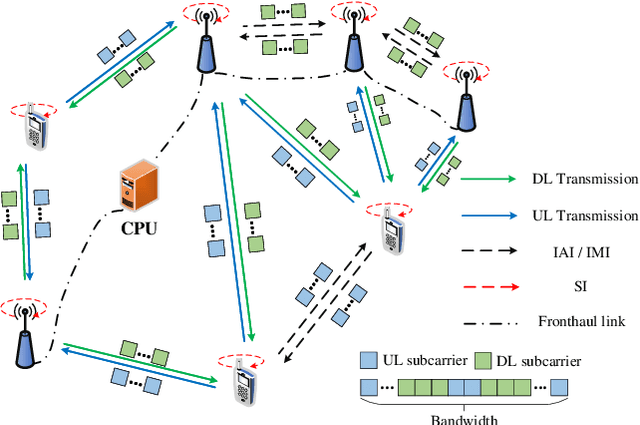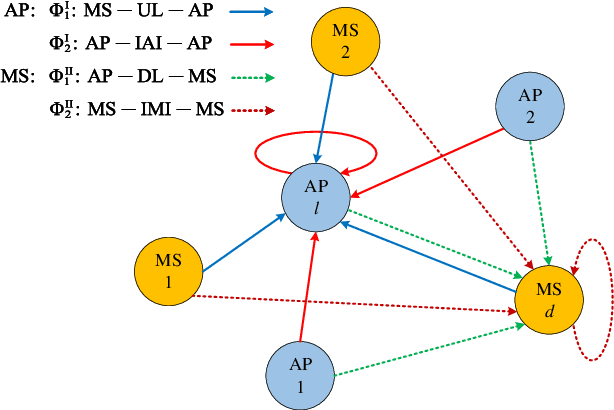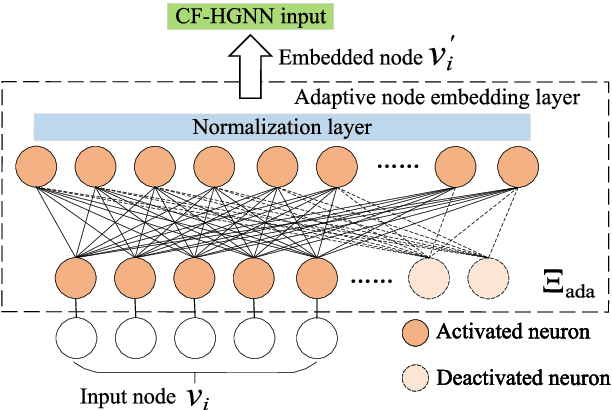Robert G Maunder
Multicarrier-Division Duplex for Solving the Channel Aging Problem in Massive MIMO Systems
May 05, 2022



Abstract:The separation of training and data transmission as well as the frequent uplink/downlink (UL/DL) switching make time-division duplex (TDD)-based massive multiple-input multiple-output (mMIMO) systems less competent in fast time-varying scenarios due to the resulted severe channel aging. To this end, a multicarrier-division duplex (MDD) mMIMO scheme associated with two types of well-designed frame structures are introduced for combating channel aging when communicating over fast time-varying channels. To compare with TDD, the corresponding frame structures related to 3GPP standards and their variant forms are presented. The MDD-specific general Wiener predictor and decision-directed Wiener predictor are introduced to predict the channel state information, respectively, in the time domain based on UL pilots and in the frequency domain based on the detected UL data, considering the impact of residual self-interference (SI). Moreover, by applying the zero-forcing precoding and maximum ratio combining, the closed-form approximations for the lower bounded rate achieved by TDD and MDD systems over time-varying channels are derived. Our main conclusion from this study is that the MDD, endowed with the capability of full-duplex but less demand on SI cancellation than in-band full-duplex (IBFD), outperforms both the conventional TDD and IBFD in combating channel aging.
Heterogeneous graph neural network for power allocation in multicarrier-division duplex cell-free massive MIMO systems
May 05, 2022



Abstract:In-band full duplex-based cell-free (IBFD-CF) systems suffer from severe interference problem including self-interference (SI) and cross-link interference (CLI), especially when cell-free (CF) systems are operated in a distributed way. To this end, we propose multicarrier-division duplex (MDD) as an enabler for full-duplex (FD)-style operation in distributed CF massive MIMO systems, where DL and UL transmissions take place simultaneously at the same frequency band but mutually orthogonal subcarrier sets. In order to maximize the spectral efficiency (SE) in the proposed systems, we present heterogeneous graph neural network specific for CF systems (CF-HGNN), which consists of an adaptive node embedding layer, meta-path based message passing, meta-path based attention and downstream power allocation learning. In particular, the adaptive node embedding layer can handle the varying number of access points (APs), mobile stations (MSs) and subcarriers, and the involved attention mechanism enables each AP/MS node in CF-HGNN to aggregate the information from interfering path and communication path with different priorities. Numerical results show that CF-HGNN is capable of using $10^4$ times less operation time to achieve the 99% performance of the SE of quadratic transform and successive convex approximation (QT-SCA). Additionally, CF-HGNN also significantly outperforms unfair greedy method in terms of SE performance. Furthermore, CF-HGNN exhibits good adaptivity to varying number of nodes and subcarriers, and also generalization ability to different sizes of CF network.
 Add to Chrome
Add to Chrome Add to Firefox
Add to Firefox Add to Edge
Add to Edge